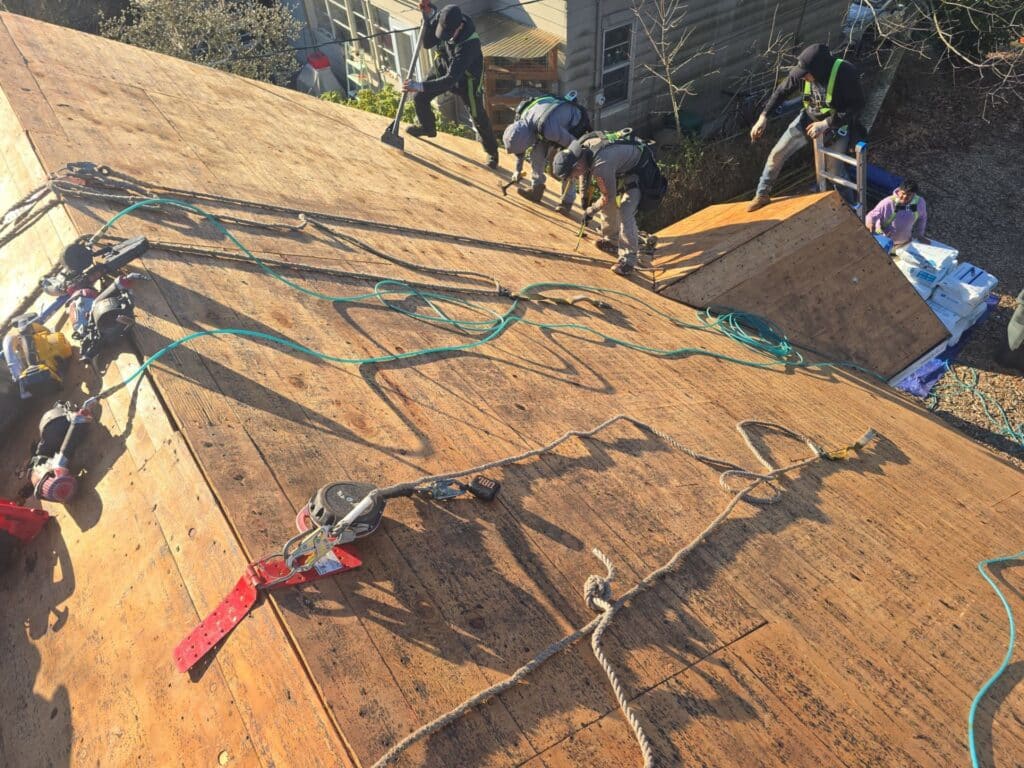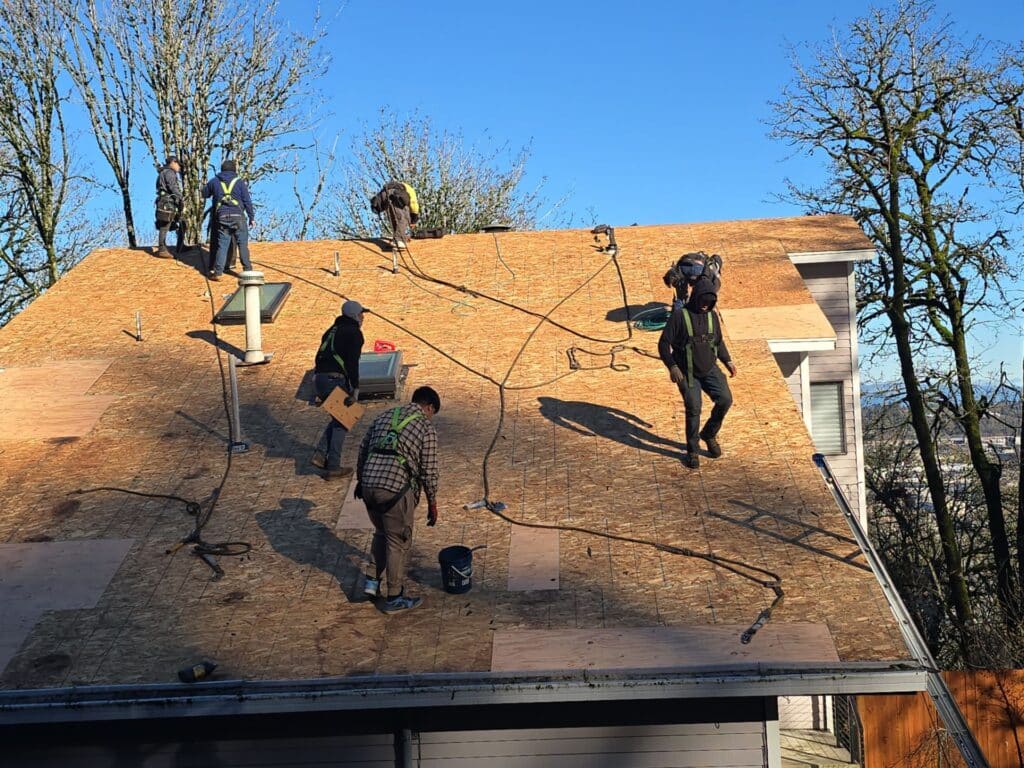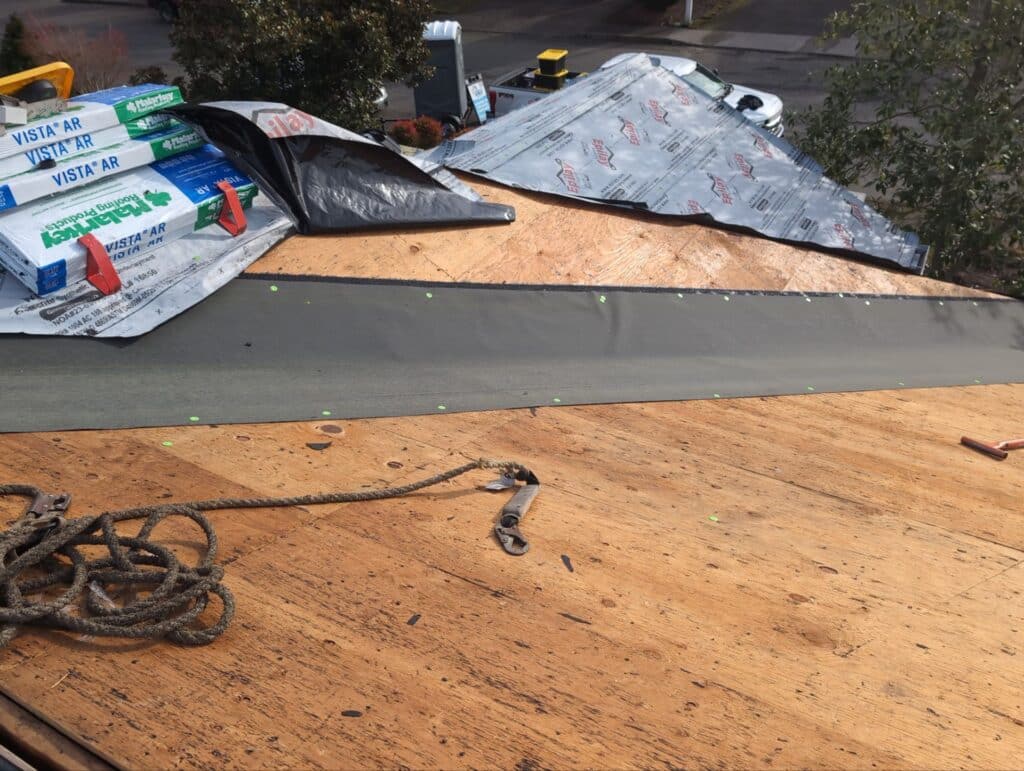When you look up at your roof, all you see are shingles or maybe metal panels—but there’s a whole lot more going on underneath! One of the most critical yet often overlooked parts of your roof is roof sheathing (also known as roof decking). It’s the unsung hero that provides the strength and stability your roof needs to hold up against the elements.
So, what exactly is sheathing on a roof, and why does it matter? Let’s dive in.

Roof sheathing is the base layer of wood panels that sits directly on top of your roof’s framing. It acts as the foundation for your shingles, tiles, or metal roofing, ensuring everything stays in place and your roof can handle whatever Mother Nature throws its way.
There are two main types of roof decking:
When it comes to the best roof sheathing, you’re usually choosing between two materials: OSB (oriented strand board) roof sheathing and roofing plywood. Each has its pros and cons.


Both materials work well for most roofs, and your choice will depend on budget, climate, and personal preference.
Roof sheathing thickness matters because it determines how much weight your roof can support. Typical thicknesses include:
Your contractor will determine the right thickness based on building codes, climate, and roofing material.
Plywood sheathing is the most common type of sheathing used as roof sheathing. It provides a strong base for the rest of the roofing components and is an ideal choice for roof sheathing.
When considering what you need to know about roof sheathing, remember that it must be able to hold the weight of heavier material without compromising the structure. If you have an old roof, you might need to replace your sheathing to ensure longevity.
Every roofing project should start with a guide to roof sheathing, detailing how sheathing can hold up against the elements. If you choose to replace roof sheathing, plywood for roof sheathing is often the best for your roof.
Ultimately, the right material for roof sheathing will support the roof rafters or trusses effectively, ensuring your home remains safe and sound.
Roof sheathing is a crucial component of your roof system, providing support for the entire roof. It’s essential to know about roof sheathing to maintain a fortified roofing structure. Generally, roof sheathing should be replaced during a roof replacement or if damaged roof sheathing is identified during a roof inspection.
Understanding the types of roof sheathing is vital; there are two types of roof sheathing commonly used for roof applications. Roof sheathing is typically made from plywood or oriented strand board (OSB), which can hold the weight of the roof. If your roof sheathing wasn’t properly installed or is too old, it may need to be replaced, especially if you’re dealing with a roof repair situation.
Your sheathing is designed to last decades, but there are some signs that it might need replacement:
If your roof is being replaced, your contractor will inspect the sheathing to see if any boards need swapping out. This is an important step to ensure your new roof lasts as long as possible.
Replacing sheathing can add to the cost of a new roof, but it’s often necessary. Here’s why:
Some roofing contractors include a set number of replacement boards in their estimates, while others charge separately. Always ask how sheathing replacement is handled before signing a contract!
Your roof sheathing may not be visible, but it plays a crucial role in keeping your home safe and secure. Whether you opt for OSB roof sheathing or roofing plywood, ensuring you have the right material and thickness will help extend the life of your roof.
If you’re considering a new roof or suspect your sheathing might need an upgrade, reach out to IBEX Roof—we’re here to help you make the best decision for your home. A strong roof starts with a solid foundation, and that foundation is your roof sheathing!